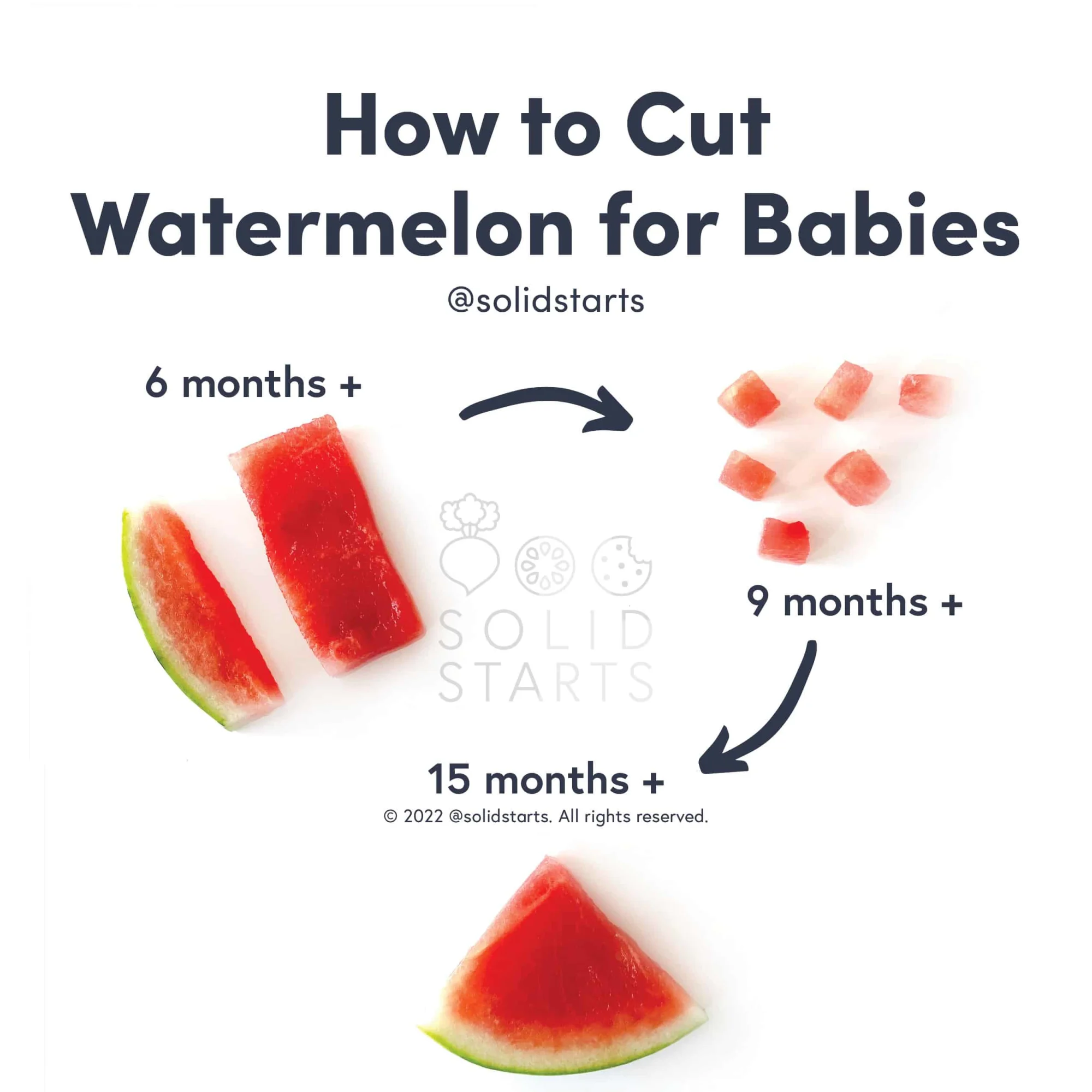Watermelon
Fruit
Age Suggestion
6 months
Iron-Rich
No
Common Allergen
No
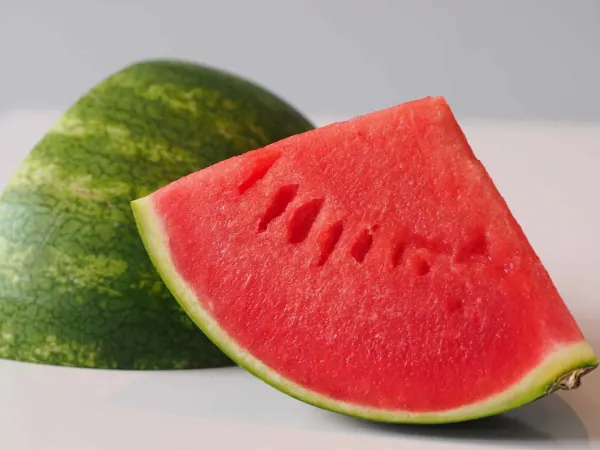
When can babies have watermelon?
Watermelon may be introduced as soon as a baby is ready to start solids, which is generally around 6 months of age.
Watermelon is the quintessential hot weather treat: brightly colored and refreshingly crunchy and juicy. But in Africa, where the watermelon originated, it served much more practical purposes. In a hot, dry climate, the melon’s thick rind and moisture-rich interior made it a valuable source of water when and where people needed it.
Is watermelon healthy for babies?
Yes. Watermelon boasts the powerful antioxidant lycopene (with higher levels in red watermelon than in tomatoes) and other phytonutrients, such as beta-carotene, that support immune function, and a unique amino acid called citrulline that may promote healthy blood pressure. Watermelon also contains some vitamin C, which can support iron absorption from plant-based foods, so think about pairing watermelon with ingredients like quinoa, lentils, chia seeds, or leafy greens. Offering fiber, vitamins, and minerals, watermelon rinds also contain the amino acid citrulline, which means the rind may be as beneficial for blood pressure as watermelon flesh.
★ Tip: Pre-cut melon has been associated with a number of outbreaks related to salmonella infection. For this reason you should always wash the rinds of all melons before cutting into them.
Is watermelon a common allergen?
No, watermelon is not considered to be a common allergen. However, some individuals with grass or ragweed allergies or Oral Allergy Syndrome (also called pollen-food allergy syndrome) may be sensitive to watermelon. Oral Allergy Syndrome typically results in short-lived itching, tingling, or burning in the mouth and is unlikely to result in a dangerous reaction. Individuals with known allergies to latex, avocado, banana, tomato, kiwi, and other melons may also be sensitive to watermelon.
As you would when introducing any new food, start by offering a small quantity for the first few servings. If there is no adverse reaction, gradually increase the quantity over future meals.
Is watermelon a choking hazard for babies?
While watermelon is not typically considered to be a common choking risk, it can be a challenging food for young babies and watermelon seeds can pose an aspiration risk. To reduce the risk of aspiration and choking, prepare and serve watermelon in an age-appropriate way. Note also that watermelon is a “mixed consistency,” which means it has both solid parts that need to be chewed and a high amount of liquid which moves differently than the solids as baby chews. This tends to cause a fair amount of coughing and gagging when it is eaten as baby learns to manage both a solid consistency and the juice at the same time. As always, make sure you create a safe eating environment and stay within an arm’s reach of baby during meals. For more information on choking, visit our sections on gagging and choking and familiarize yourself with the list of common choking hazards.
Videos
Can watermelon cause diarrhea in babies?
Yes. Watermelon is over 90% water, which helps promote healthy digestion, especially if baby is experiencing harder stools. When a significant quantity is consumed, it is not unusual to see looser stools. When that poop does come, know that red-fleshed watermelon can result in red-pigmented stool; don’t worry, it isn’t blood.
How do you serve watermelon to babies?
Every baby develops on their own timeline, and the suggestions on how to cut or prepare particular foods are generalizations for a broad audience.
6 months old +:
You have two options: Serving watermelon on a large rind with most of the fruit cut off (so the rind acts more as a teether) or offering watermelon sticks about the width of two fingers pressed together, and about the thickness of a ruler, without the rind. If baby is just getting started on solids, serving on the rind may be easier for them to pick up and manage in the mouth. This also acts as an "unbreakable" food for baby to practice the skills of chewing and moving the tongue. If baby is closer to 8 months old or has strong biting skills, you may want to serve a rectangular piece without the rind. Also keep in mind that watermelon is a "mixed consistency," with liquid and chewable components. This tends to lead to coughing as baby learns to manage both consistencies in the mouth at the same time.
To serve the rind: First, wash the melon before cutting into it. Offer baby a thick watermelon rind at least an inch thick and a few inches long with a small amount of fruit flesh left on (about 1 inch or less). If the rind is long and curved, cut a bit of each end off so it’s more straight as a piece. Also, if there are any sharp corners, simply slice them off or blunt to soften (pounding the corner on a cutting board can do the trick). Over time, as baby’s skills build and your confidence in baby’s ability to handle more challenge increases, you can leave on more and more of the flesh on the rind. Foods like watermelon rinds that act like teethers are fantastic for developing the oral motor skills needed to chew and move food around in the mouth for swallowing. If baby is able to bite off a piece of the rind, remain calm and give baby a chance to work the piece out of their mouth independently. You can lean them forward or kneel next to them so they look down, allowing gravity to help move the piece forward. Then, take the rind away from baby and move on to the next age bracket for serving suggestions.
To serve watermelon sticks: The sticks should be about the size of two adult fingers together, or a larger piece about the size of a deck of cards for baby to hold with two hands. Remove any seeds as you cut. Remember, it’s common for watermelon juices to cause a fair amount of coughing and gagging. If a too-big piece of flesh breaks off, stay calm and give baby a chance to work it forward independently before intervening. Baby’s gag reflex is very active to help keep things away from their airway, but if you feel that baby is struggling excessively with watermelon served in this way, return to watermelon served on the rind with only a small amount of flesh for a little longer, or avoid this food entirely for a few more weeks before trying again.
9 months old +:
Offer watermelon sticks about the size of two adult fingers together or watermelon cut into small, bite-sized pieces. If you’d like to continue serving watermelon on the rind, by all means do so; serving on the rind can be a good strategy for babies and toddlers who shovel too much food in their mouths at once. Keep in mind that while the rind helps some 9–14-month-old babies manage this challenging mixed consistency food, others may be strong enough to bite through the rind by this age. If this happens, stay calm, let baby work it forward and out then consider removing the watermelon rind and instead offering bite-sized pieces or sticks. Either way, know that as baby becomes more confident in their biting skills, they may bite off a piece that makes you uncomfortable. Trust baby to chew the fruit, and if needed, allow them to spit it out on their own before intervening.
15 months old +:
At this age, you can either serve watermelon in small bite-sized pieces, or in the classic triangular pieces, with the rind on (it is edible, so don’t worry if the child teethes and munches on that part). If the child successfully bites off too-big pieces of the rind, simply cut some of the rind off before serving. In the dead of summer with a teething toddler? Puree watermelon and freeze into small popsicles for a tasty teething treat—or just insert a popsicle stick into a wedge of watermelon and freeze.
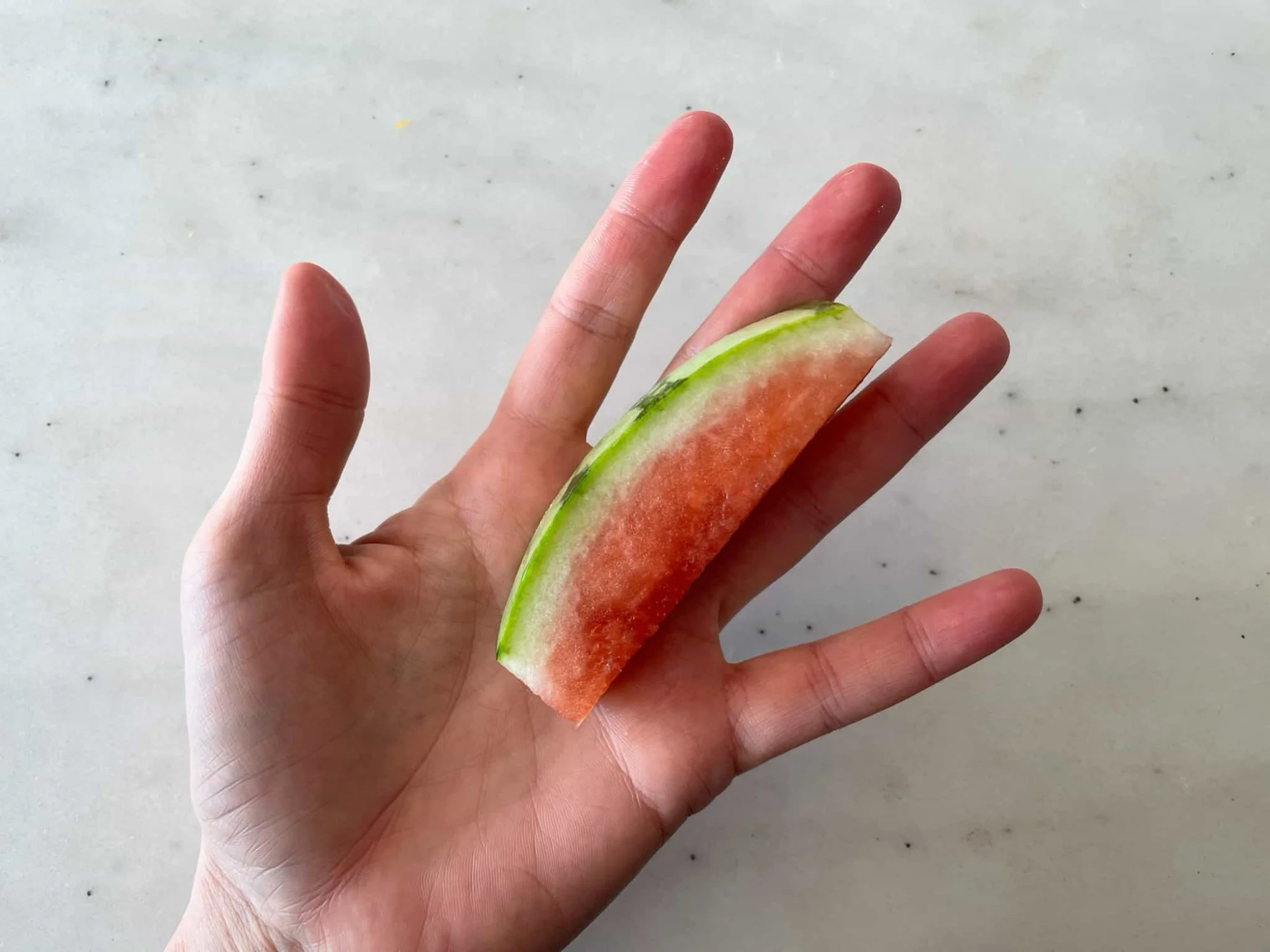
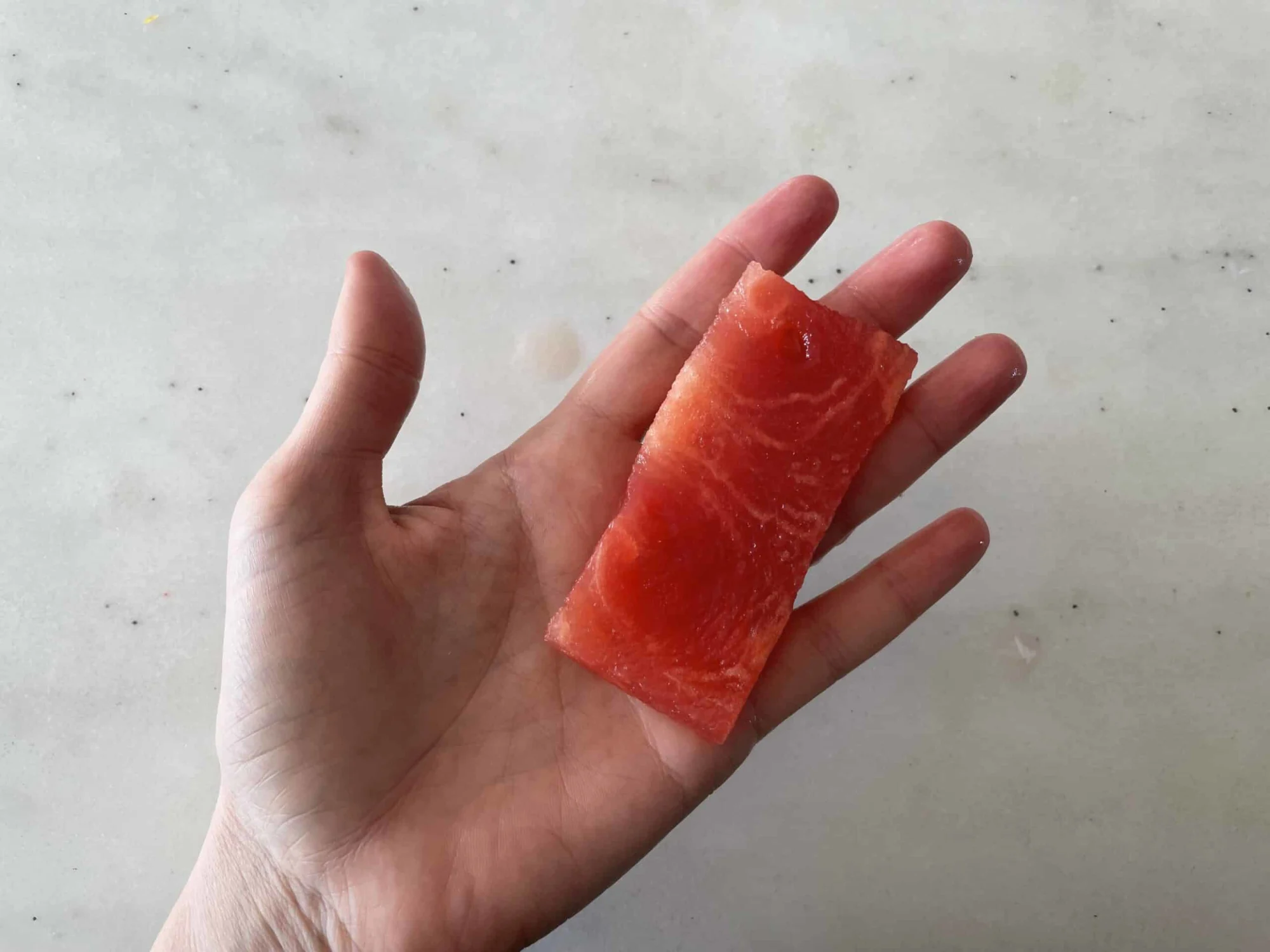
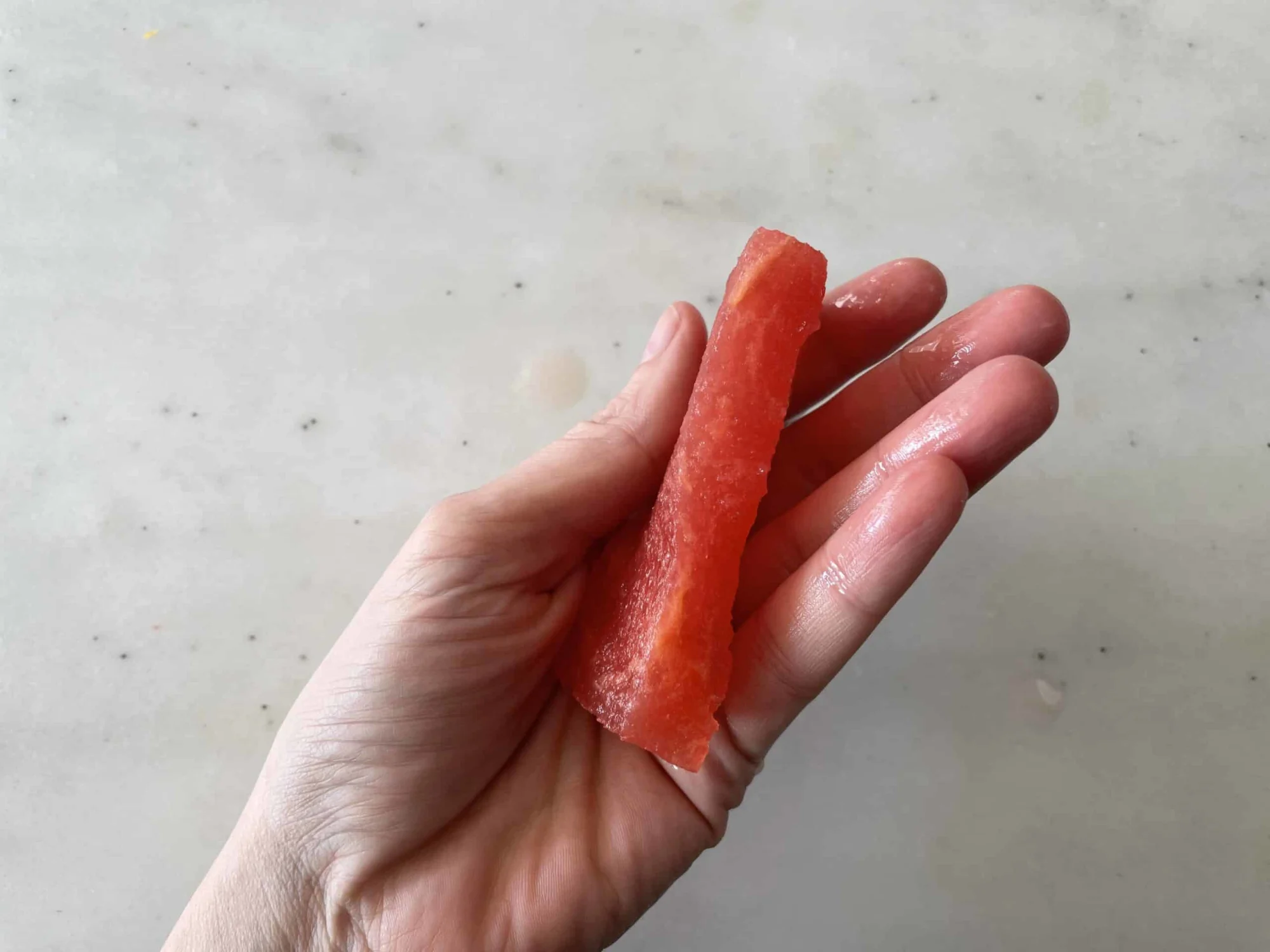
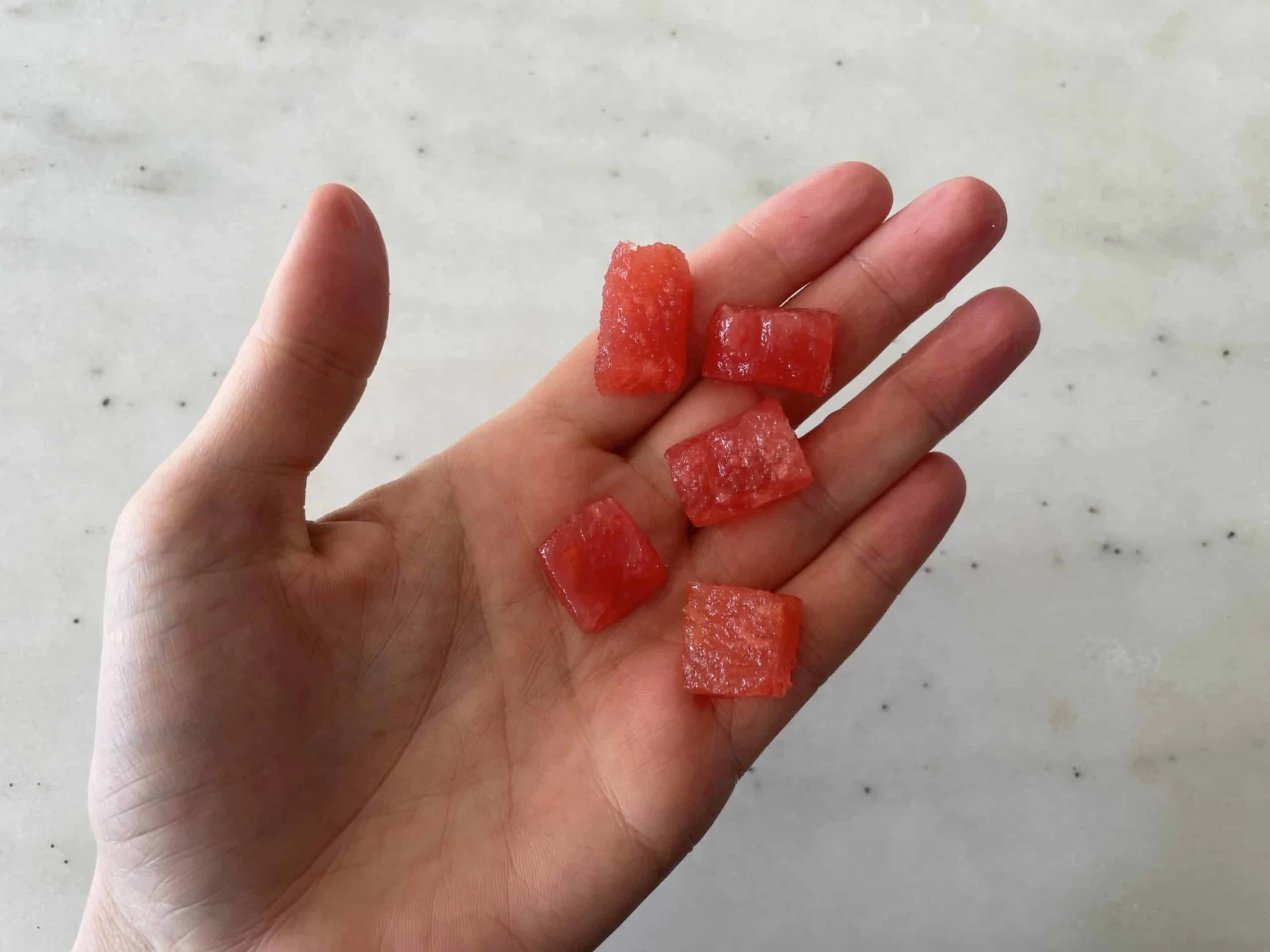
One way to cut watermelon for babies 6 mos +
If you're stuck in a puffs and pouches rut, check out our 100 Snacks for Babies & Toddlers.
Written by
Expert Tips Delivered to Your Inbox
Sign up for weekly tips, recipes and more!
The content offered on SolidStarts.com is for informational purposes only. Solidstarts is not engaged in rendering professional advice, whether medical or otherwise, to individual users or their children or families. No content on this site, regardless of date, should ever be used as a substitute for direct medical advice from your doctor or your medical or health professional, nutritionist, or expert in pediatric feeding and eating. By accessing the content on SolidStarts.com, you acknowledge and agree that you are accepting the responsibility for your child’s health and well-being. In return for providing you with an array of content “baby-led weaning” information, you waive any claims that you or your child may have as a result of utilizing the content on SolidStarts.com.




